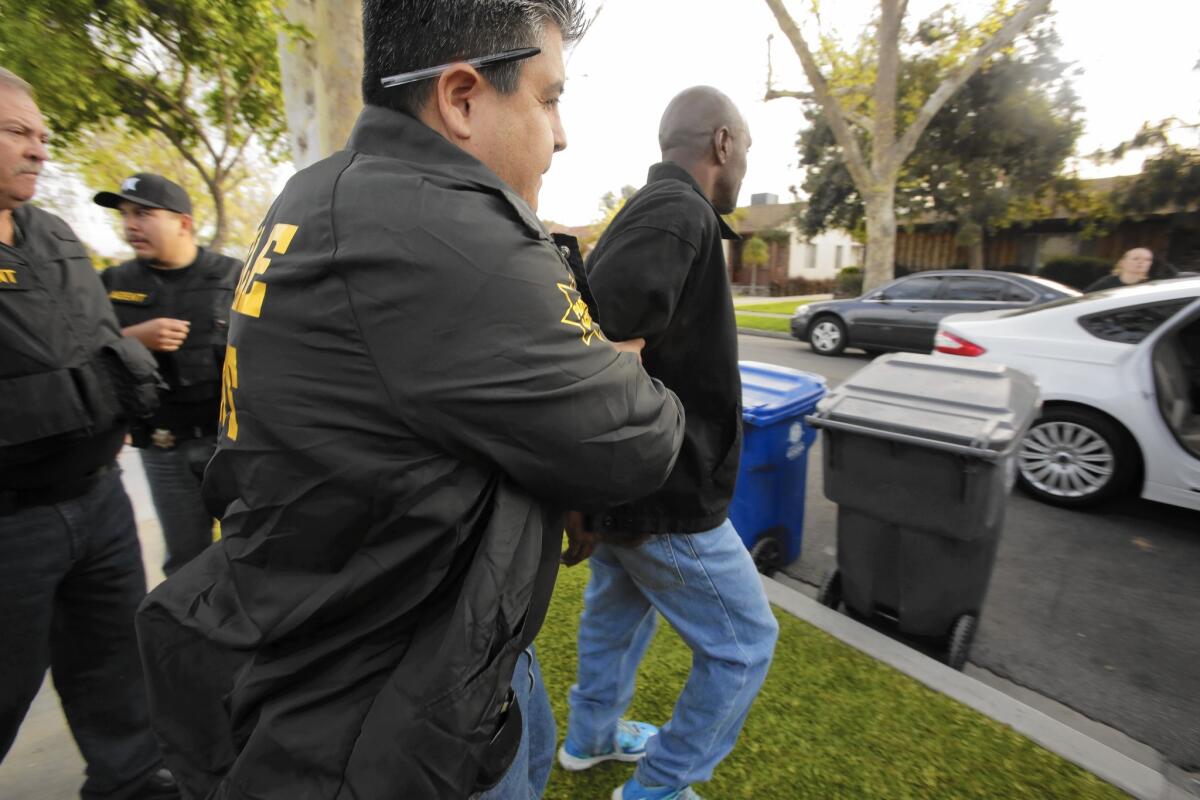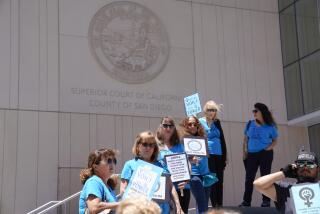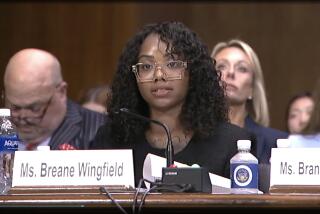More parole agent caseloads exceed limits under new sex offender rules

Reporting from SACRAMENTO — Since two sex offenders were charged with killing four women while under state and federal watch, California has changed how it supervises such parolees, increasing scrutiny of some and relaxing the monitoring of others.
A Times analysis of state data shows that the number of parole agents with caseloads exceeding state limits has increased under the new system, further stretching California’s already strained ability to oversee freed sex offenders.
The new regimen, which now ties parolees’ supervision to risk-assessment tools, therapy and their own behavior, “will let us achieve higher levels of public safety,” said Douglas Eckenrod, who runs the state’s sex offender monitoring program.
He said the program shifts resources from those parolees considered less likely to commit new crimes and toward those deemed a public safety threat. The new system, phased in slowly but fully in place since mid-September, also allows offenders who comply with parole rules to earn less supervision.
“We want them to want to not reoffend,” said Eckenrod, an administrator in the California Division of Adult Parole Operations.
All sex offenders must still wear ankle monitors that track their movements, and they must continue to check in with parole agents. But they must now also attend therapy sessions and undergo polygraph testing about their sexual behavior and compliance with treatment.
How often they must do so is determined with input from therapists and the offenders’ scores on actuarial tables used to gauge the risk that they will reoffend.
In addition, there are now four levels of supervision instead of two, and variations within those levels. For instance, high-risk parolees who are homeless now require three surprise visits by an agent each month rather than two, and a new category of lowest-risk parolee is seen once a month rather than twice.
But records of parole agents’ assignments, obtained from corrections officials under California’s public-records law, show that one-third have been supervising more offenders than state policy permits.
By late December, 2,611 — two in five — of the 6,099 sex offenders on active parole were at the highest level of supervision, and 15 were at the lowest, according to the state records.
In 16 of California’s 38 parole offices, more than half of agents were over the state’s 40-case maximum — a limit that varies with offenders’ risk level and can be as low as 20.
One agent in Bakersfield was supervising 40 parolees, 37 of them high-risk. The limit is 20 high-risk offenders. Some carried almost double the maximum load.
“This is hugely problematic and will, in our estimation, compromise public safety,” said Ondre Henry, president of the Parole Agents Assn. of California.
Henry said his union supports most aspects of the new system, which was based on recommendations made in 2009. They followed the arrest of a supervised sex offender who had held a woman, Jaycee Dugard, captive in his backyard for 18 years.
But the labor group objects that California has not adopted a key recommendation: that a parole agent be assigned no more than 20 sex offenders of any risk level.
The Times reported in August that caseloads already routinely exceeded those set out in state policy.
Corrections officials say agents’ other duties have been reduced since the 2009 recommendations. Improvements to the software used to analyze GPS tracks means that data can now be reviewed in an hour a day, down from three hours a day five years ago, for example.
A parole supervisor in Southern California said agents do spend less time checking GPS tracking data. But he said the gain is not as great as officials state and is offset by new chores, such as more field visits and the need to coordinate supervision with therapists, polygraphists and others.
“It may be quicker to run tracks, but the sex offender management program added other casework duties, so the time savings was greatly diminished,” said the agent, who asked to not be named because he did not have agency permission to speak publicly.
Excessive workloads became a public issue last year after two Orange County men, Franc Cano and Steven Gordon, were charged with murder in the slayings of four women from 2013 to 2014. Both men were at one time or another under supervision by state parole agents and the U.S. Office of Probation and Pretrial Services.
In August, the state agents supervising Cano and Gordon were overseeing up to 10 people more than policy limits permit.
Corrections officials said the state’s supervision changes were unrelated to the arrests of Cano and Gordon. A month before the new policy became official, the corrections department refused to acknowledge that a change was being considered.
Citing privacy rights and internal investigations, California parole officials refuse to release Cano and Gordon’s supervision records, which would include their risk and supervision levels. Records posted on a state website before Cano’s arrest on suspicion of murder show him at low risk of committing another crime based on his past offense, substantial sexual contact with a child, and his age at the time of that crime: 21.
The state budget that Gov. Jerry Brown proposed recently includes money to hire 27 people to monitor sex offenders. They would fill jobs that, according to a budget letter created by Brown’s finance department, were “inadvertently eliminated” in 2012.
[email protected]
Twitter: @paigestjohn
More to Read
Sign up for Essential California
The most important California stories and recommendations in your inbox every morning.
You may occasionally receive promotional content from the Los Angeles Times.











